Natural Infusions for Spirits March 9, 2023

Is your glass searching for a spiced-up version of your preferred, but monotonous drink? The world craved magic in a glass and distillers went on to sprucing up good old, trusted gin. Evolving gin beyond the ice and a slice into a burst of tastes that are more adventurous. Your favourite flavours infused in this spirit of desire. Gin labels are peppering the spirit with flavours to create stunning seasonal sippers, delicate floral drinks, and summery berry tipples. Flavour inspirations are primarily derived from seasonal aromas. But before we explore the world of tempting spirits flooding the market, a quick dive into what makes gin such a special elixir.
What’s all the Fuss about a Gin?
The Dutch gave gin to the world, but it was made popular by the English. A quick (and interesting) history recap, GIN derives its name from old English genever, French genièvre and Dutch jenever. All these terms come from the Latin word juniperus, meaning juniper. Gin is recognised globally for its distinct flavour and aroma. But where does it originate? It is the small juniper berry that forms the base of any gin. In fact, a beverage cannot be labelled as gin without the presence of juniper. It is a clear, distilled spirit with dominant botanical flavours of juniper, flowers, and fresh and dried fruit. Unlike the past, where gin was a dry, single flavour spirit, gins now come in a variety of flavours. Even though the hint of juniper may be barely detectable, the berry forms the cornerstone of a true gin.
The art of prepping Gin
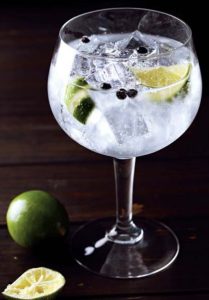 Preparing gin is an art, and this block of clay can be moulded in various fashions, though a distilled alcohol base is the most popular place to kick start proceedings. A concoction is then prepared by blending juniper and other botanicals. These ingredients slowly release their flavours in the alcohol before distillation takes place again. The resulting fusion delivers a smooth yet complex spirit.
Preparing gin is an art, and this block of clay can be moulded in various fashions, though a distilled alcohol base is the most popular place to kick start proceedings. A concoction is then prepared by blending juniper and other botanicals. These ingredients slowly release their flavours in the alcohol before distillation takes place again. The resulting fusion delivers a smooth yet complex spirit.
It is interesting to note that juniper berries that are the foundation of every gin aren’t actually berries. Technically they are closer to pine cones than blueberries. To prepare gin, the berries are picked, crushed, or chopped before blending with alcohol. The flavour of juniper is dependent on the soil, climate, and minerals. This results in distinct flavours, even when gins are distilled from the same lot of juniper berries.
An expedition to uncover refreshing Gin Flavours
Juniper berries may form the core of gin, but the possibilities of creating a unique concoction are endless. Gins differ depending on the diverse potpourri of botanicals, herbs, and fruits that converge to create an exclusive blend.
The world over myriad flavours are being explored to make a gin. We decided to dive into a few.
Lemon
 If juniper puts you off gin, then a lemon infusion can come with a “freshness” rescue. Lemon’s signature acidity helps create a toned-down blend that is delicate and docile. This is a perfect spirit for newbies looking for a breezy experience.
If juniper puts you off gin, then a lemon infusion can come with a “freshness” rescue. Lemon’s signature acidity helps create a toned-down blend that is delicate and docile. This is a perfect spirit for newbies looking for a breezy experience.

Orange
Similar to lemon, orange aids in softening gin’s spicy juniper. Dried orange peels are popular among various brands while distilling gins.
Orris Root
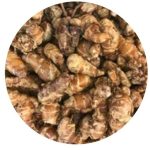 Flourishing in Florence, orris root is the perfect remedy to find the right balance of aromas and flavours in a gin. It is the bulb of the iris plant, and is harvested from plants over three to four years old. It is further stored for two to three years as its flavour matures. The resulting product is hard and requires intense grinding before it can be used to flavour gin. It is bitter, but a favourite among distillers for its ability to fix botanical flavours and the floral tones it possesses.
Flourishing in Florence, orris root is the perfect remedy to find the right balance of aromas and flavours in a gin. It is the bulb of the iris plant, and is harvested from plants over three to four years old. It is further stored for two to three years as its flavour matures. The resulting product is hard and requires intense grinding before it can be used to flavour gin. It is bitter, but a favourite among distillers for its ability to fix botanical flavours and the floral tones it possesses.
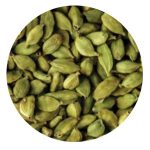 Cardamom
Cardamom
Opposites attract goes perfectly well when talking about cardamom and gin. It may seem like an odd pairing, but the two stimulating flavours, sticky, spicy juniper, and gingery cardamom converge to create a smooth, sweet spirit. Cardamon gives gin a eucalyptus sort of lift.
Liquorice
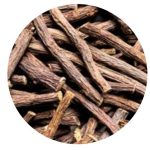 Liquorice complements juniper in every way. It’s a unique blend of sweet and bitter, sour, and salty, though liquorice infused gin is an acquired taste. The two merge to produce a spirit that is lush, sharp, and resolute without overwhelming your senses.
Liquorice complements juniper in every way. It’s a unique blend of sweet and bitter, sour, and salty, though liquorice infused gin is an acquired taste. The two merge to produce a spirit that is lush, sharp, and resolute without overwhelming your senses.
 Cinnamon
Cinnamon
Cinnamon is commonly found in Sri Lanka. Barks are extracted from the tree trunk and branches and then rolled into quills. A gin blend with cinnamon has a spicy edge.
Nutmeg
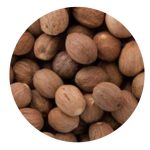 Native to Indonesia, nutmeg is widely cultivated in tropical weathers in Asia and the West Indies. Gin gets a warming undertone and a sweet, aromatic flavour when blended with ground nutmeg seeds.
Native to Indonesia, nutmeg is widely cultivated in tropical weathers in Asia and the West Indies. Gin gets a warming undertone and a sweet, aromatic flavour when blended with ground nutmeg seeds.
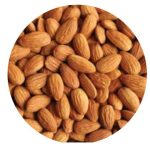 Almond
Almond
Almond is native to Iran and surrounding countries, but the USA accounts for over half of global production. Almonds are high in essential oil content and come with a sweet and sour taste. Both types go into the preparation of gin. Almonds are ground before mixing with gin for a nutty, soapy, and spicy flavor
Black Pepper
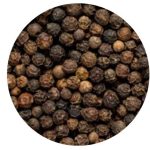 If you are looking to transform your gentle gin into a livewire, black pepper will aid your quest. A simple ingredient, black pepper when infused with gin augments its profile. When merged with lemongrass it tends to create a further nuanced flavour.
If you are looking to transform your gentle gin into a livewire, black pepper will aid your quest. A simple ingredient, black pepper when infused with gin augments its profile. When merged with lemongrass it tends to create a further nuanced flavour.
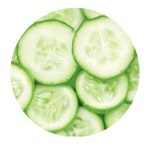 Cucumber Slice or a Citrus Fruit Wedge
Cucumber Slice or a Citrus Fruit Wedge
On a hot day, a cucumber or orange slice in gin is just the soothing balm you need. It is light, sweet, and irrefutably invigorating. For those starting out with gin, cucumber will go a long way in taming gin’s juniper. Just add a slice to your drink or buy a blend.
Flavoured gin is not a novel concept. It’s been enticing customers for decades. The difference today is the visual appeal, and the unique flavour blends producing great tasting mixes. With the festive season knocking on the door, pour a glass of any of these flavoured gins for your family and friends. Make it a memorable celebration.
 Ultra International B.V.
Ultra International B.V.